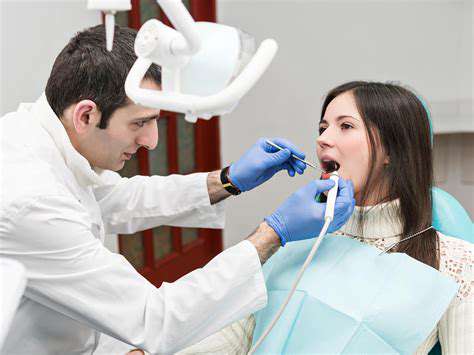The Connection Between TMJ Disorders and Headaches

Understanding Temporomandibular Joint (TMJ) Disorder
Temporomandibular joint (TMJ) disorder is a condition affecting the jaw joint, causing pain and discomfort in the jaw, face, and neck. It involves the complex interplay of muscles, ligaments, and bones that work together to enable chewing, talking, and other facial movements. TMJ disorders can stem from a variety of factors, ranging from teeth grinding to stress and trauma. Identifying the root cause is crucial for effective treatment.
This complex condition can manifest in various ways, including headaches, earaches, and difficulty opening or closing the mouth. Understanding the underlying mechanisms is key to developing targeted solutions. Common symptoms often include clicking or popping sounds in the jaw, and a feeling of stiffness or lockjaw.
Causes of TMJ Disorder
Several factors can contribute to the development of TMJ disorders. These include misalignment of the teeth, commonly known as malocclusion, which can strain the jaw muscles and joints. Bruxism, or teeth grinding, is another significant contributor, placing excessive pressure on the TMJ over time. Stress and anxiety can also play a role, leading to muscle tension in the jaw area.
Trauma to the jaw, either from an accident or a forceful impact, can also damage the TMJ. Furthermore, arthritis, certain medical conditions, and even certain medications can sometimes contribute to TMJ problems. Understanding these contributing factors is essential for proper diagnosis and treatment.
Symptoms of TMJ Disorder
Recognizing the symptoms of TMJ disorder is the first step towards seeking treatment. Common symptoms include pain in the jaw joint, face, and neck. This pain can be intermittent or persistent, and can range from mild discomfort to severe agony. A clicking or popping sound in the jaw joint is another common symptom that may be accompanied by limited jaw movement. Pain and tenderness in the ear are also possible, sometimes mistaken for ear infections.
Difficulty chewing or opening the mouth widely can also indicate a TMJ problem. Headaches, particularly around the temples, are frequently reported by patients with TMJ disorder. These symptoms can vary in severity and frequency, impacting daily activities significantly.
Diagnosis of TMJ Disorder
Diagnosing TMJ disorder typically involves a thorough examination by a healthcare professional, such as a dentist or an oral and maxillofacial surgeon. The evaluation often includes physical examination of the jaw joint, palpation of the surrounding muscles, and assessment of jaw movement. A detailed medical history is essential to understand any contributing factors, such as past injuries or existing medical conditions. X-rays, CT scans, or MRIs may also be used to visualize the joint and surrounding structures, enabling a comprehensive assessment.
Treatment Options for TMJ Disorder
Treatment options for TMJ disorder vary depending on the severity and cause of the problem. Conservative approaches often include over-the-counter pain relievers, ice packs, and stress management techniques. Physical therapy exercises aimed at strengthening jaw muscles and improving range of motion can also be beneficial. In some cases, bite guards or splints may be recommended to prevent teeth grinding and reduce strain on the jaw.
For more severe cases, corticosteroid injections, or other medications may be prescribed to reduce inflammation and pain. In extreme situations, surgical intervention may be necessary to correct structural problems within the TMJ. Choosing the right treatment approach is critical to managing the condition effectively and minimizing long-term complications.
Living with TMJ Disorder
Living with TMJ disorder can significantly impact daily activities. Pain and discomfort can affect chewing, speaking, and even sleeping. Managing stress effectively is crucial for minimizing muscle tension in the jaw. Developing healthy coping mechanisms and seeking support from friends and family can be invaluable. Regular exercise, maintaining a healthy diet and staying hydrated can also contribute to overall well-being.
Making lifestyle adjustments can greatly improve quality of life. Considering alternative therapies, such as acupuncture or massage, might also be helpful in certain cases. It's important to consult a healthcare professional for guidance on suitable strategies and to ensure that any chosen treatment plan complements your existing health needs.
